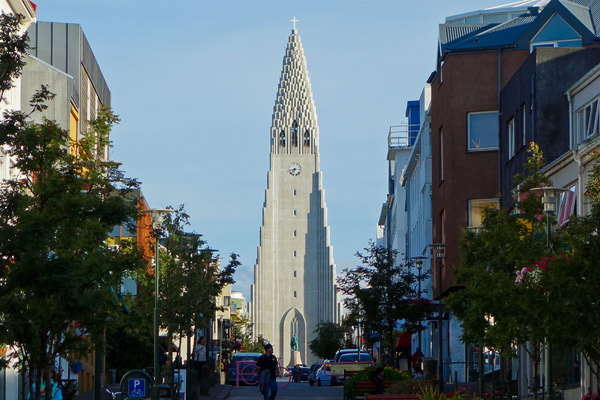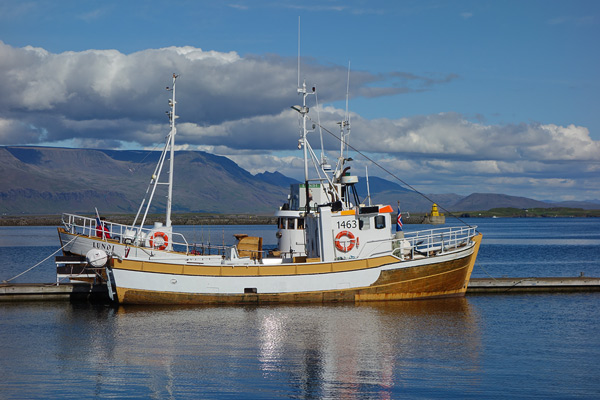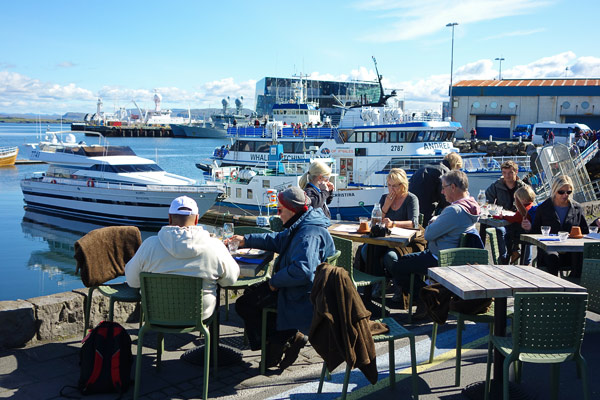As this was my first time in Iceland, I enjoyed a burst of first impressions. It's a rainy land with plenty of moss and green scrub covering black volcanic lava flows. And it has almost no trees. Even when the first settlers came, it was a land nearly without trees. Today about 1 percent of Iceland is forested, and much of that includes trees used to landscape towns. Sparsely populated and geographically isolated, Iceland has a rich folklore along with a passion for nature -- and a strong connection between its heritage and nature. It seems every rock has a thousand-year-old name and a legend to go along with it. There's no escaping nature here, and that's turned into a plus. Trendy restaurants are enthusiastically organic -- literally wallpapered with fish skin and serving gourmet delights on slabs of rock and rustic little planks.

Reykjavik's Lutheran church, Hallgrímskirkja, seems to fit the terrain. Rocketing organically out of the landscape, it's the leading church in a society that is very close to nature.
And local pride is actually a psychological condition. Social scientists note that people who live on little, remote islands often have an inferiority complex and brag about whatever they can. It's called the "Small Island Syndrome" and it actually makes visiting Iceland more fun. Little things are big here. Icelanders of note who live abroad are almost revered here. The place where Bill Clinton ate an Icelandic hot dog is practically a historical monument.
Tourism is important and, as you don't just casually drop by Iceland, marketing is critical. A challenge for the tourist board is that outsiders can't remember or even pronounce anything on the map beyond the capital city. We all know Reykjavik -- which is abbreviated Rvk -- but few can pronounce the name of the infamous volcano, Eyjafjallajökull, which stopped so much trans-Atlantic air travel in 2010. For convenience, it's referred to by its first letter and the number of letters that follow: E15. The town of Vik, while of no interest to tourists, is the second most famous place in the country -- simply because foreigners (that's everyone but a third of a million people on this planet) can remember it and spell it.

A new visitor is struck by the brilliant light. Especially near the harbor, with the sun low in the sky, the colors are warm and rich. Iceland is a photographer's delight.

While many residents still consider the notorious local dish known as "rotten shark" a delicacy (they munch tiny bits of fermented shark and down it with the local firewater), the new cuisine is trendy, enticing, and tasty. Thanks to local expertise in greenhouse agriculture, plenty of excellent fruit and vegetables are available.
Whether or not you can remember any names on the map, Iceland is an easy and rewarding place in which to travel. Icelandair has good fares in general and makes stopovers almost free. Since the economic crisis of 2008-2011, the value of the Icelandic crown has dropped by half. While prices have risen on imported goods correspondingly, the cost of living and visiting here, while still expensive, is about on par with Denmark -- and much lower than in Norway. There are plenty of guesthouses, hostels, and fun, affordable eateries. Tourist activities and services (like bike tours and cheap shuttle buses from the airport) are competitively priced. All you need is a passport and proficiency in the English language.